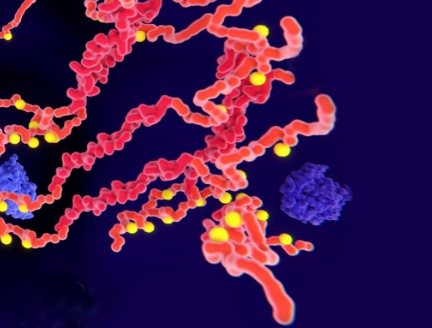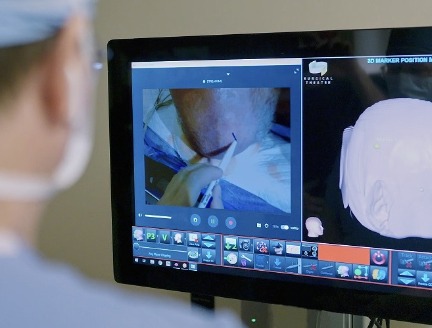


Precision Medicine
Is there hope for an FDA-approved therapy specifically for PAD?
Current Peripheral Arterial Disease therapies offer relief from symptoms, but novel therapeutics are urgently needed

Heart attack and stroke are the top two causes of atherosclerotic cardiovascular morbidity. Another significant cause is peripheral arterial disease (PAD), which affects arteries in the lower extremities. According to the Centers for Disease Control and Prevention, the overall cost of heart diseases in the United States was $363 billion in 2016 and 2017. Over 14 million people in the United States and over 200 million people globally suffer from PAD.
Typically, PAD is caused by atherosclerotic plaques in the large leg arteries although, less commonly, PAD can also be caused by radiation exposure, blood vessel inflammation, limb injury and unusual anatomy of muscles or ligaments. Symptoms of PAD include intermittent claudication (pain on walking), and critical limb ischemia (CLI), which is characterized by leg pain at rest, ulceration and gangrene. In extreme cases, the loss of tissue integrity in the distal limbs can lead to amputation. In many cases, PAD symptoms can be atypical or absent altogether, which is why PAD often goes unrecognized and undertreated.
Patients with PAD are at a greater risk of heart attack, stroke, and cardiovascular death. Despite investigational efforts and research studies spanning decades, current medical therapies only offer suboptimal relief of symptoms, particularly in cases of CLI. Therefore, a thorough understanding of the current PAD management practices and related challenges is crucial to explore novel therapeutics for this unmet need. Towards this end, John Cooke, MD, PhD, professor and chair of cardiovascular sciences at Houston Methodist, discussed the PAD pathophysiology, advances in medical revascularization for PAD and potential therapeutics for PAD reversal in a review study published in Circulation Research in 2021.

John Cooke, MD, PhD, professor and chair of cardiovascular sciences at Houston Methodist
Atherosclerotic plaques interfere with proper blood flow in one or more of the major leg arteries, preventing proper delivery of oxygen and nutrients as well as proper toxin removal. Typically, PAD is defined by an ankle-brachial index (ABI) of 0.90 or less. However, the ABI – which essentially is the ratio of the blood pressure in an ankle artery to that of an artery of the arm – is not used sufficiently. While classic claudication symptoms occur in only a minority of PAD patients, all PAD patients demonstrate significant disabilities in walking capacity, daily functional activities and exercise performance. There is also a noteworthy variation in the clinical course of PAD patients, depending on whether they exhibit intermittent claudication or CLI. PAD patients with CLI face a likelihood of death and major amputation of 30% or more by year one, whereas the probability of amputation is 1-3.3% over five years for those with intermittent claudication.
There are various risk factors for PAD which are typical risk factors for cardiovascular diseases. However, the most common PAD risk factors are diabetes and smoking, which is why patients are advised to control blood glucose uptake and quit smoking. Medical therapies used for PAD management include antiplatelet and antithrombotic agents, statins and antihypertensive therapy with angiotensin-converting enzyme inhibitors or angiotensin receptor blockers.

Few areas in cardiovascular medicine are more in need of new therapeutic modalities than PAD. In recent years, there have been significant advances in our understanding of the genetic, epigenetic, proteomic and cellular regulation of angiogenesis, arteriogenesis, adult vasculogenesis and cell fate decisions regulating vascular recovery. The answers lie in the refinement of our models, in the application of new molecular tools to patient tissues and in the persistence of our efforts to benefit our patients.”
John Cooke, MD, PhD
Professor and Chair of Cardiovascular Sciences
at Houston Methodist
Current medical therapies for PAD were established from treatments typically used for coronary artery diseases. Although these therapies are useful to reduce the incidence of heart attack and stroke, they do not substantially improve lower limb perfusion, reduce symptoms of claudication or the risk of limb loss. Additionally, the symptoms of CLI are mostly resistant to current medical therapies. Revascularization procedures may also inadequately relieve symptoms. Furthermore, the management of PAD patients is usually complicated by comorbidities such as diabetes, hypertension, hyperlipidemia, cardiac failure and renal failure. Interestingly, a pre-eminent criterion for approval of a therapy by the Food and Drug Administration (FDA) is amputation-free survival. Thus, there is a serious need for expedited investigations to design appropriate therapies that fulfill this FDA prerequisite.
There are several arguments as to why we do not currently have therapies specifically for PAD. Patient heterogeneity exists in the response to similar degrees of atherosclerotic disease. For instance, two patients with the same hemodynamic compromise may exhibit different degrees of functional compromise, I.e. intermittent claudication versus CLI. Clinical experiences suggest that the different presentations of patients with similar alterations in ABI may be due to variations in microvascular and end-organ response . However, a precise understanding of the PAD pathophysiology and its relationship to symptoms is lacking. Moreover, experimental studies such as administration of angiogenic cytokines and cell therapy have had disappointing results when tested in large randomized clinical trials.
“Few areas in cardiovascular medicine are more in need of new therapeutic modalities than PAD. In recent years, there have been significant advances in our understanding of the genetic, epigenetic, proteomic and cellular regulation of angiogenesis, arteriogenesis, adult vasculogenesis and cell fate decisions regulating vascular recovery. The answers lie in the refinement of our models, in the application of new molecular tools to patient tissues and in the persistence of our efforts to benefit our patients.” said Cooke.
Additional cellular processes such as maintenance angiogenesis, adult vasculogenesis, arteriogenesis, pericyte association and cell fate transitions required for vascular regeneration need to be explored to perhaps design combinatorial approaches for PAD management. Studies on the maintenance and repair of microvasculature at the molecular level may also add further insights.
Brian H Annex, John P Cooke. New Directions in Therapeutic Angiogenesis and Arteriogenesis in Peripheral Arterial Disease. Circ Res. 2021 Jun 11;128(12):1944-1957. doi:10.1161/CIRCRESAHA.121.318266.
Dr Annex is supported by R01HL150003, RO1148590, RO1HL141325, 3RO1HL101200 (Popel, Johns Hopkins, PI), and RO1GM129074 (Mac Gabhann, Johns Hopkins, PI). Dr Cooke is supported by R01s HL133254 and HL148338; and Cancer Prevention Research Institute of Texas CPRIT RP150611.
Abanti Chattopadhyay, PhD, August 2022








